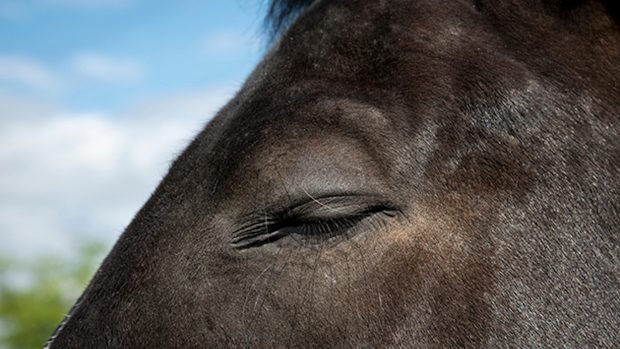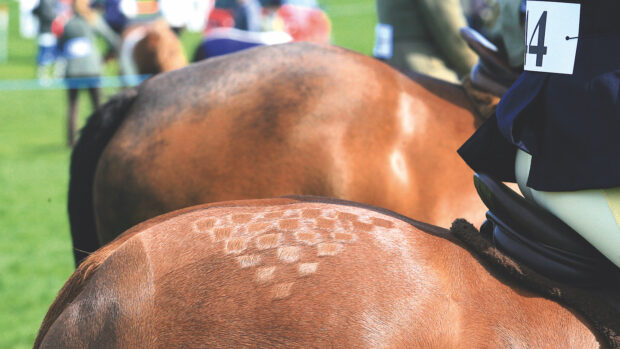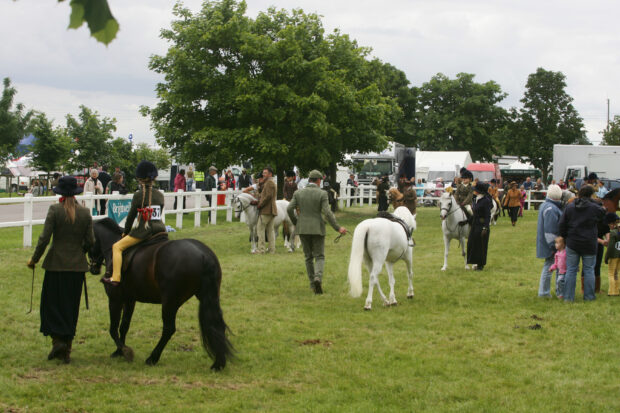Top pony producer Julie Templeton shares her thoughts on introducing rider size and weight rules in showing, and why she thinks this is more important than a rider’s age...
I READ a recent article on the H&H website (“It’s about equine welfare, not flattening ponies”, 24 February). The article is in part about Horse of the Year Show’s (HOYS) decision to remove some of its qualifiers for plaited ponies from the Great Yorkshire Show’s schedule, because the show would not drop its rider age rule with an open mind. However, I believe that HOYS’ removal of qualifiers is an unfair decision.
There are two key elements that need to be addressed head on, yet they seem to have been swept under the carpet. First, why is it that only plaited
pony classes are being targeted? If rules on rider size and weight are to be brought in, which I agree with, these should be brought in across all classes, including the mountain and moorlands and horses.
As it stands, a 5ft 3in, lightweight adult cannot work in a 128cm show pony at the Great Yorkshire as they are too old to ride it in a class, yet a 5ft 10in lightweight adult could potentially compete a Dartmoor pony in the ring. When the wording of the rule is finally agreed by the societies and the Showing Council, it needs to be implemented across the board and not just target the already dwindling plaited pony classes.
Second, the welfare issue should be about size and weight, not about age. Carl Hester’s grand prix horses don’t arrive at his yard ready made, in the same way our show animals don’t. They require backing, training and continual schooling by an educated and suitably sized rider.
Stating the ponies should be “children’s ponies” – and that they should be suitable to be ridden only by children eligible to ride them in the ring – implies that my seven-year-old, first-ridden jockey in her first year of showing would need to school and set up the pony for the ring.
The title of the class isn’t the “safest” pony; if it was, it would completely change the dynamic of showing as a sport. As long as any pony or horse is being worked in by someone of a suitable size, then there are no welfare issues.
If we set these ponies up correctly, especially for the very young jockeys, then we are guaranteeing that the child will have a safe, positive and enjoyable time in the ring and will hopefully want to continue their equestrian career, whether in the show ring or in another discipline.
An overdue rule
FINALLY, with my Showing Council hat on, I was disappointed to read Stuart Hollings’ comment on amateur rulings (opinion, 24 February). We have done so much collaborative work with all the member bodies in order to produce these amateur rulings which are deemed fair, easy to understand and the same across all societies.
All the associations involved took decisions back to their respective individual boards and the final rules were agreed by everyone around the table.
The rule against allowing people to choose judges for certain shows and then compete under the same judges in the ring is a ruling that has been long overdue. The changes now mean that an independent person is appointed to select judges for shows, something that many areas and shows already implement.
On the subject of the marks system, the society UK Ponies and Horses has never used marks in their qualifiers, favouring the importance of ring craft, the go-round and the final walk round.
Again, there was so much consultation work done prior to removing the marks system from all Royal International (RIHS) qualifiers. In fact, the British Show Pony Society even included the topic “How to judge without marks” in their most recent judge’s conference.
I applaud the societies for making these bold moves to benefit showing as a whole and for the RIHS in supporting them.
- This exclusive column will also be available to read in Horse & Hound magazine, on sale Thursday 10 March
You may also be interested in…

Stuart Hollings: New amateur rulings in showing are ‘bureaucratic buffoonery’

HOYS removes qualifiers after show stands firm on its rider-size rule

Horse welfare and rider size: HOYS issues statement on show’s lost qualifiers

‘It’s about equine welfare, not flattening ponies’: show speaks out on its rider-weight stance

Five years on, show’s rider size policy is making change

Subscribe to Horse & Hound magazine today – and enjoy unlimited website access all year round




